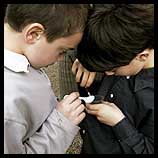

Biodiversity information
What
is biodiversity?
What is taxonomy?
What is systematics?
The mention of biodiversity commonly conjures up images of steaming tropical forests, and these are without doubt some of the most diverse areas on the planet. But did you know that the UK is also an area rich in biodiversity?
Biodiversity comes from the words 'biological diversity'. In its simplest sense it refers to all the life forms on Earth. You can find biodiversity all around you - it is all the plants, animals, fungi and micro-organisms, the differences within and between species, and the communities which they form.
Taxonomy is the science of naming and classifying fossil and living organisms. A classification system provides a way of organizing knowledge about the natural world. It helps to make sense of the enormous diversity of life. The best-known system was invented by Linnaeus in the eighteenth century. Including the Latin 'binomial' (genus and species) it remains the basis of many modern methods.
Systematic biology includes taxonomy. It is the science in which we discover, describe, name and classify living and fossil organisms,
and work out their evolutionary relationships. Find out more in Web of Life, from the UK Systematics Forum.
'Without
taxonomy to give shape to the bricks, and systematics to tell us how to
put them together, the house of biological science is
a meaningless jumble.'
Sir
Robert May
Chief Scientific Advisor
to the Government
